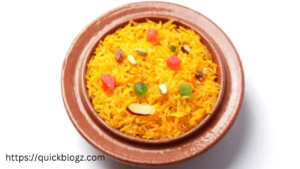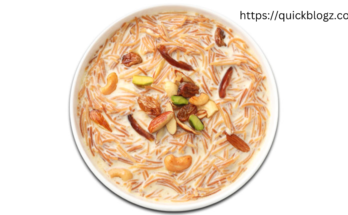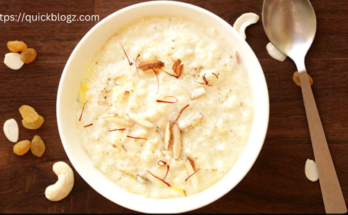What is Zarda & how is it made?
Here’s a traditional Zarda recipe that takes the guesswork out of classic Meethe Chawal (or Sweet Rice). Yes to old-school, nostalgic flavor without fear or fuss. This recipe requires 6 ingredients, one pot (if you’d like), and around 15 minutes of active time. Tested to perfection! What is Zarda & how is it made?
One of most the thrilling parts of blogging is demystifying those nuanced, aspirational recipes like biryani, dahi bhallay, or kashmiri chai. I’m here for transforming ideas into concrete formulas, turning the art into science, making a recipe run like a code that you won’t have to debug.
It’s taken me years to figure it out, and now that I have, I realize how simple it was all along. So allow me to shorten your Zarda learning curve and share a few tips I’ve gleaned after dozens (yes, this number is embarrassingly accurate) of trials.
ZARDA DEMYSTIFIED
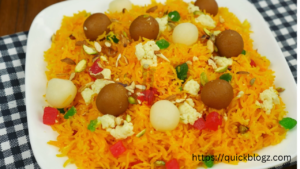
- The Rice: The key to a good zarda is well-cooked rice. At first, I’d parboil the rice like I would for biryani, cooked but with a bite to it. After several trials of less-than-perfectly-soft rice, I realized this: When making Zarda, boil the rice until it’s cooked enough so that you could eat it that way. More details, including timing, below!
- The Sugar Syrup: The Chashni, or sugar syrup, is what makes Zarda so elusive. But it’s actually quite simple. You’re looking to dissolve the sugar, but not thicken the syrup. More below!
- The Steam: The last Zarda conundrum – when to start the steaming, or ‘dum‘. Along with details, timing, pictures, and video, it all comes down to this – You want to see more rice than water at the surface. And once cooked, just let it be for another 10 minutes.
WHAT IS ZARDA (OR MEETHE CHAWAL)?
Zarda is an iconic Pakistani and Indian dessert. It’s often served as a celebratory dish for special occasions such as festivals, weddings, or holidays such as Eid. Distinguished by its deep-yellow color, Zarda gets its name from the word zard, which means “yellow” in Urdu. (If you are looking for another popular Eid Dessert, check out my 20-Minute Seviyan (Sheer Khurma) recipe).
Zarda is made with simple ingredients like rice, sugar, and milk, and is often (very aptly) called ‘Meethe Chawal’, which directly translates to Sweet Rice. Another common name for it is Zarda Pulao, which alludes to the rice being infused with ghee, sugar, spices, and nuts.
HISTORY & ORIGINS
Zarda’s Persian roots are evident in its saffron yellow color and the use of nuts (called dry fruit in Pakistan & India).
As seems to be the case with biryani, Zarda’s saffron-infused color was slowly replaced by the cheaper and more readily available food coloring called ‘zarda rang’.
INGREDIENTS YOU’LL NEED
- Aged, long-grain basmati rice – I use Royal’s Chef’s Secret Basmati Rice. Another good option is Sella Basmati rice, which is steamed while still in its husk. This variety is sturdier and can withstand a bit of overboiling better than traditional basmati. Sella rice requires longer boiling and soaking than regular basmati rice.
- Whole Milk – I love the creaminess and flavor that the milk adds. See variations for dairy-free options.
- Food coloring – This is the powdered form of food coloring found at Desi stores. I usually use yellow but you can also use a saffron-orange color.
- Ghee – Ghee is obviously the most authentic choice, but you can substitute it with butter or even neutral oil. Note that butter has more water content than ghee, which means you may have to boil out the excess water for 1-2 minutes longer before steaming the rice.
- Cardamom pods – If you’d rather not use whole green cardamom pods, you can substitute a pinch of ground cardamom.
HOW TO MAKE ZARDA – 3 MAIN STEPS
Here’s how to make it and tips on what to look out for at each stage:
PARBOIL THE RICE
- Soak the rice: This helps create softer, fluffier rice. If you don’t soak it for long enough, you’ll have to boil it longer. And if you soak it for too long, boil for less time.
- Parboil the rice: As I mentioned earlier, the rice needs to be boiled until you would be fine eating it.
For reference, here’s how my rice acts minute-to-minute:
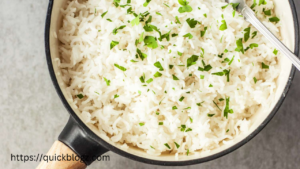
- At 3 minutes, the rice still has a raw center.
- At 4 minutes, the center has mostly cooked, but the rice kernel is still tough.
- Around 5 minutes, the rice starts to swell and the rice is just-cooked.
- At 6 minutes, the rice is cooked, but starts to break easily without getting mushy.
- At 6-7, the rice starts to get slightly mushy when pressed between your fingers. This is when you’ll want to drain the boiling rice.
MAKE THE SUGAR SYRUP (CHASHNI)
Making the sugar syrup goes by quickly, so try to have your ingredients prepared nearby.
- Once the sugar dissolves in the water, add the milk and bring it to a simmer. You’ll notice it becoming foamy & frothy. That’s when you add the rice. If the sugar syrup thickens too much, it goes into hard-candy territory. Instead of absorbing the sugar syrup, the rice will be be coated in it, making it stiff.
- Undercooking the rice syrup is a better problem to have. All you’ll need to do is boil the water from the rice for a bit longer.
COOK THE RICE
- Carefully mix in the rice. Bring to a gentle boil and allow to simmer, undisturbed, for 2 minutes, until the sugar syrup has reduced and the Zarda is no longer watery. You want to see more rice than water at the surface. Sprinkle in orange blossom/kewra water, if using.
- Wrap the lid in cloth or foil to contain steam as much as possible, then cover and steam (‘dum‘) for 15 minutes. The liquid should be absorbed and the rice fully cooked.
- Turn off the heat and let it sit with the lid on for another 10 minutes. This helps the rice rest and soak in any remaining moisture.
- Tip: If you’re worried your rice will stick to the bottom of the pot, place a heat diffuser, flat griddle, or tava underneath the pan to diffuse the heat.
TRADITIONAL ADD-INS
- Nuts: The most commonly used nuts in Zarda are blanched, slivered almonds, cashews, and pistachios.
- Coconut: Coconut flakes or crushed coconut.
- Make it festive: Zarda can be dressed up or down. Top with crumbles of khoya/mawa, golden raisins, or pieces of sweets/South Asian confectionaries.
VARIATIONS
- Spices: You can use ‘sweet’ spices such as cloves or a cinnamon stick along with the cardamom.
- Marmalade + Orange Juice: For an orange flavored Zarda, replace milk and water with orange juice and add a tablespoon or 2 of marmalade.
- Lemon or Orange zest: Add while boiling of the rice to add a hint of citrus flavor & aroma.
- Dairy-free: Make this Zarda vegan by using oil instead of ghee and replacing the milk with your favorite dairy-free milk (coconut milk sounds amazing!), juice, or more water.

